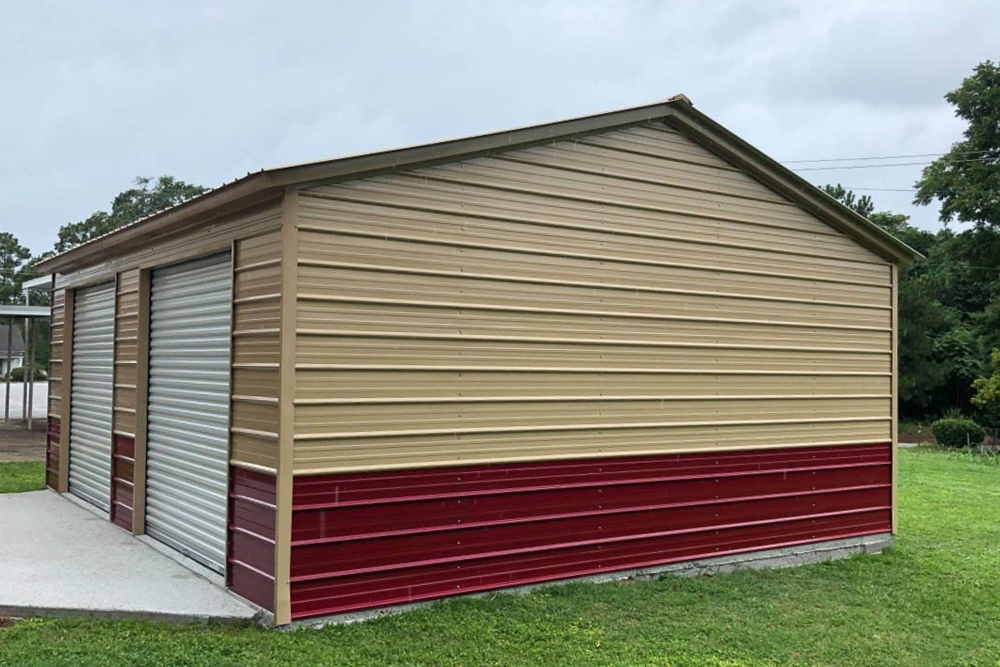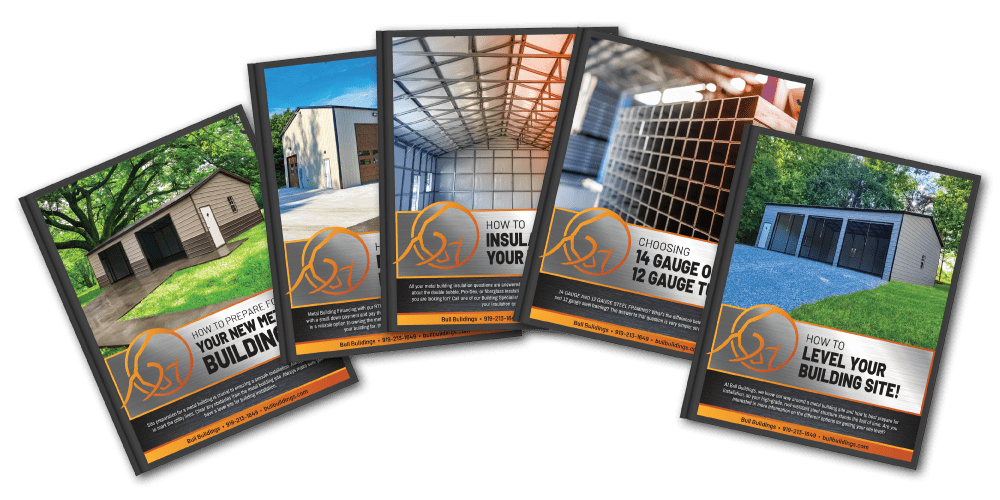
If you’re asking yourself, “should I insulate my metal building?”, you’re already thinking long term. Insulation isn’t just about making a space warmer or cooler – it’s about protecting what’s inside, lowering energy use, and keeping your structure sound for years to come. Whether you’re using your building as a workshop, storage space, or a working facility, proper insulation can make the difference between a drafty shell and a building that performs like it should.
Insulation does more than just control temperature. It plays a role in moisture management, energy efficiency, noise control, and overall durability. In uninsulated metal buildings, temperature swings can be extreme. That kind of volatility leads to condensation, which can damage stored items, encourage mold growth, and over time, contribute to rust and corrosion. With the right insulation in place, that risk drops significantly.
Why Insulation Matters for Metal Structures
Metal is a highly conductive material. That means without insulation, it rapidly transfers heat and cold between the interior and exterior. In winter, the space becomes icy and hard to heat. In summer, it traps heat and becomes unbearable without constant air conditioning.
Insulation helps establish a thermal barrier. It keeps heated or cooled air where you want it – inside. That makes your HVAC system more efficient and lowers your energy bills. If you’re wondering how to insulate an existing metal building, the good news is that you have options. You can retrofit insulation into your current structure depending on its framing and intended use. It’s easier to plan for insulation during the initial build, but if you’re upgrading the existing space, it’s far from impossible.
Moisture Control and Building Longevity
Another big reason to insulate is moisture management. When warm air inside metal buildings hits the cold metal walls or roof, condensation forms. That moisture has nowhere to go. It drips onto floors, gets into stored items, or hides in corners where mold can grow. Over time, moisture weakens structural elements and shortens the lifespan of the building.
Insulation helps prevent condensation by reducing the sharp contrast between interior and exterior temperatures. Certain types of insulation – especially those with vapor barriers – create an effective seal that keeps moisture out while allowing the building to breathe. If you’re storing electronics, machinery, or even farm equipment, preventing moisture damage is critical.
Soundproofing Benefits You Didn’t Expect
Insulating a metal building also comes with the hidden bonus of sound reduction. Metal walls and roofs tend to echo. Rain, wind, machinery – all of it gets amplified inside. But with insulation in place, sound gets absorbed rather than bounced around. This matters whether you’re trying to keep noise from leaking out or reduce distractions inside.
A fabric liner system or spray foam can help dampen sound while also boosting your insulation’s thermal performance. If you’re working with power tools, running equipment, or using the space for meetings or creative work, this can make a big difference in comfort and usability.
Choosing the Right Type of Insulation
What insulation is best for a metal building? That depends on your needs, budget, and how the space will be used. Fiberglass is a popular option thanks to its affordability and ease of installation. It fits easily between framing and works well with various facing options to create a clean finish. Spray foam, on the other hand, offers excellent thermal resistance and air sealing, but it may come at a higher cost and requires professional application.
Rigid board insulation is ideal for continuous insulation across walls or roofs. It’s durable, resists moisture, and helps eliminate thermal bridging. Then there’s reflective foil, which works well in hot climates by bouncing radiant heat away from the building’s surface. Each of these materials has strengths – and what works best in one environment may not perform as well in another.
In colder regions, high R-value insulation is recommended. In warmer climates, radiant barriers and moisture control might be more important. The type of structure you have – pole barn, workshop, warehouse, or hybrid – also influences the best insulation strategy.
When Retrofitting Insulation Makes Sense
For many building owners, the question isn’t whether insulation is valuable – it’s whether it’s still worth adding after the structure is already built. Learning how to insulate an existing metal building takes some thought, but it’s entirely doable. Retrofitting insulation can improve performance, save on long-term energy costs, and extend the lifespan of the building – especially in areas prone to humidity or large seasonal temperature swings.
The trick with retrofitting is understanding your limitations. Some insulation types require more space or certain structural conditions to work well. Spray foam, for example, is often used in retrofit jobs because it adheres to metal easily and doesn’t require a frame cavity. It also doubles as an air and vapor barrier, making it a strong choice for moisture-prone buildings. Other options, like fiberglass or batt insulation, may require installing furring strips or support framing to hold them in place. Still, with a little planning, even older buildings can be brought up to modern comfort and energy standards.
If you’re weighing your options and asking what insulation is best for a metal building you already own, it’s smart to think about both short-term and long-term goals. Do you just want to control temperature? Are you preparing the space for year-round work? Are you trying to meet local energy codes or reduce noise? All of those questions will influence the type of insulation that makes the most sense for your situation.
Understanding Building Codes and R-Values
No matter where you are in the country, your state or county likely has minimum R-value requirements for commercial or utility buildings. R-value is the measure of thermal resistance – higher values mean better insulation. The exact number you’ll need depends on local climate zones and how your building is classified. In colder climates, you’ll need a higher R-value to prevent heat loss. In warmer climates, you’ll want insulation that blocks radiant heat while also allowing moisture to escape.
Meeting or exceeding those codes not only helps avoid penalties but also protects your investment. Poor insulation leads to increased wear on HVAC systems, higher utility bills, and long-term structural damage due to moisture buildup. Choosing the right product now saves you the hassle – and expense – of fixing problems later.
Beyond Energy Savings
It’s easy to view insulation as a purely functional upgrade. But the benefits often go beyond dollars and cents. A properly insulated building feels more solid and secure. It’s quieter, cleaner, and more pleasant to spend time in. That matters whether you’re storing tools, working on projects, or just stepping inside for a few minutes during bad weather. The right insulation transforms a bare-bones shed or workshop into a space you actually want to use.
It also protects your belongings. Temperature-sensitive equipment, tools, and even hunting gear last longer when stored in a dry, stable environment. Insulation helps you maintain that kind of space. It keeps moisture and temperature swings from eating away at your investments.
How Bull Buildings Helps You Build Smarter
At Bull Buildings, we know your structure is only as good as the planning behind it. That’s why we do more than just connect you to suppliers – we do the legwork to match you with the best-fit building for your goals. Whether you’re planning ahead or trying to figure out how to insulate an existing metal building, we’ll make sure you’re set up for success from day one.
You won’t need to spend hours comparing manufacturers or trying to decipher spec sheets. We’ve already done it. We’ll make sure the building you get isn’t just tough – it’s built for the way you live, work, and store.



